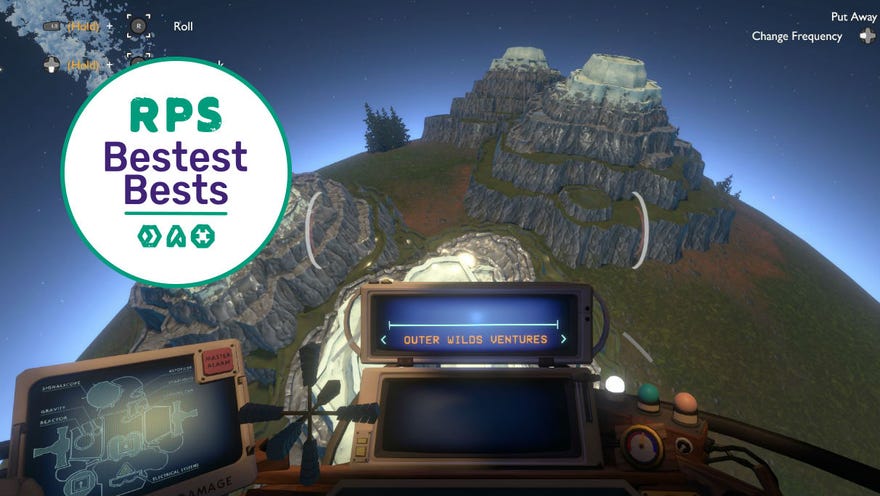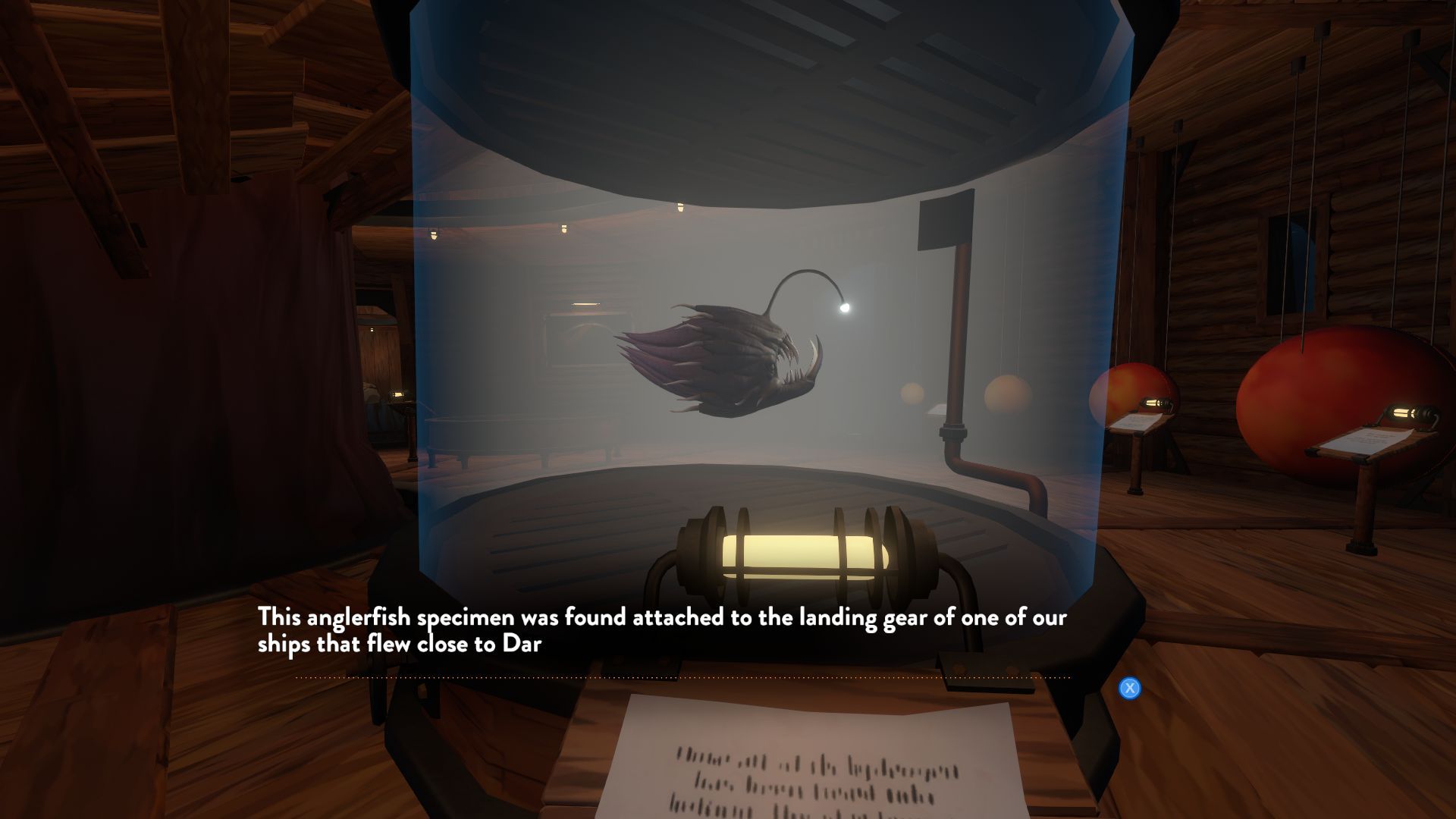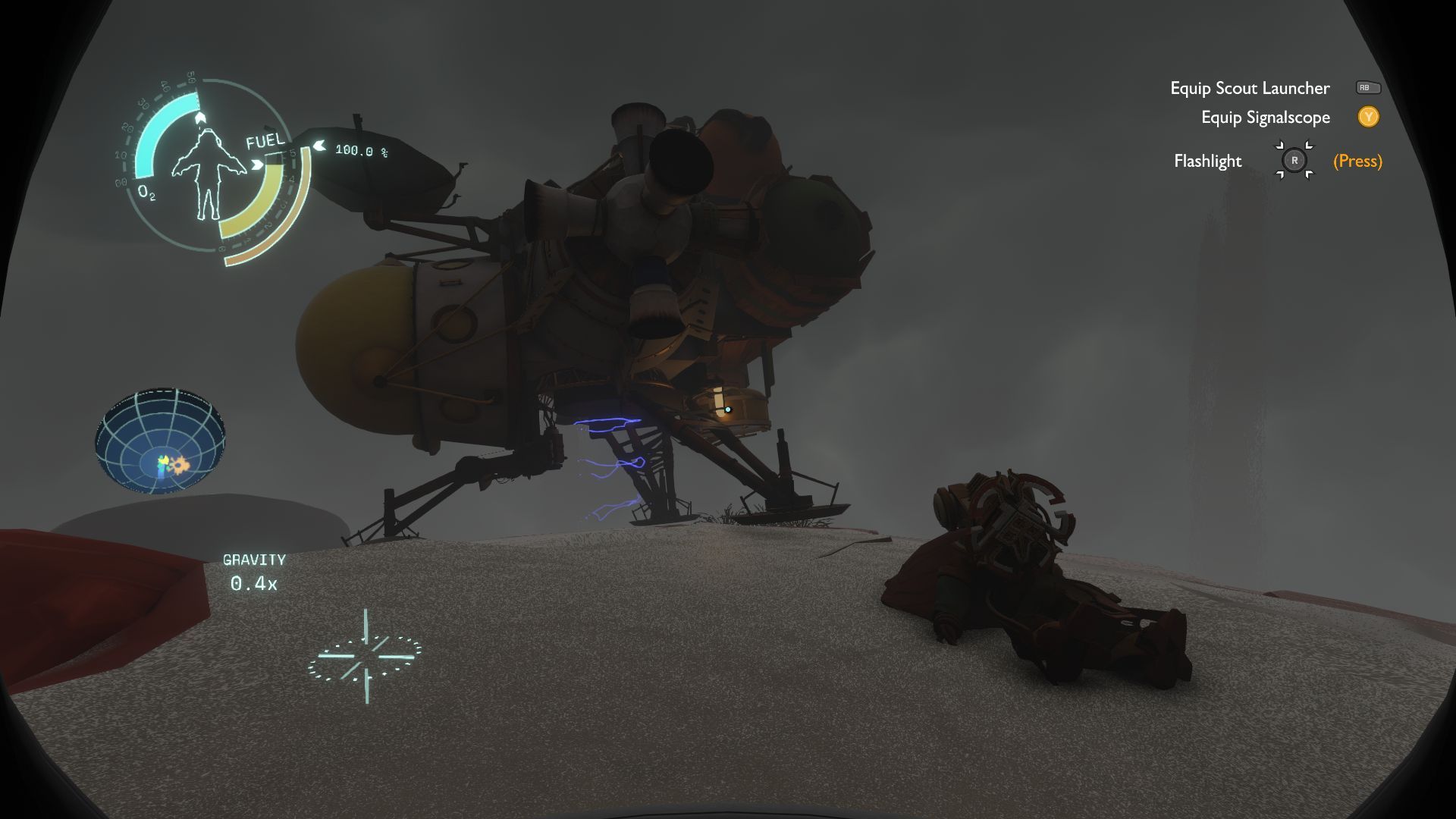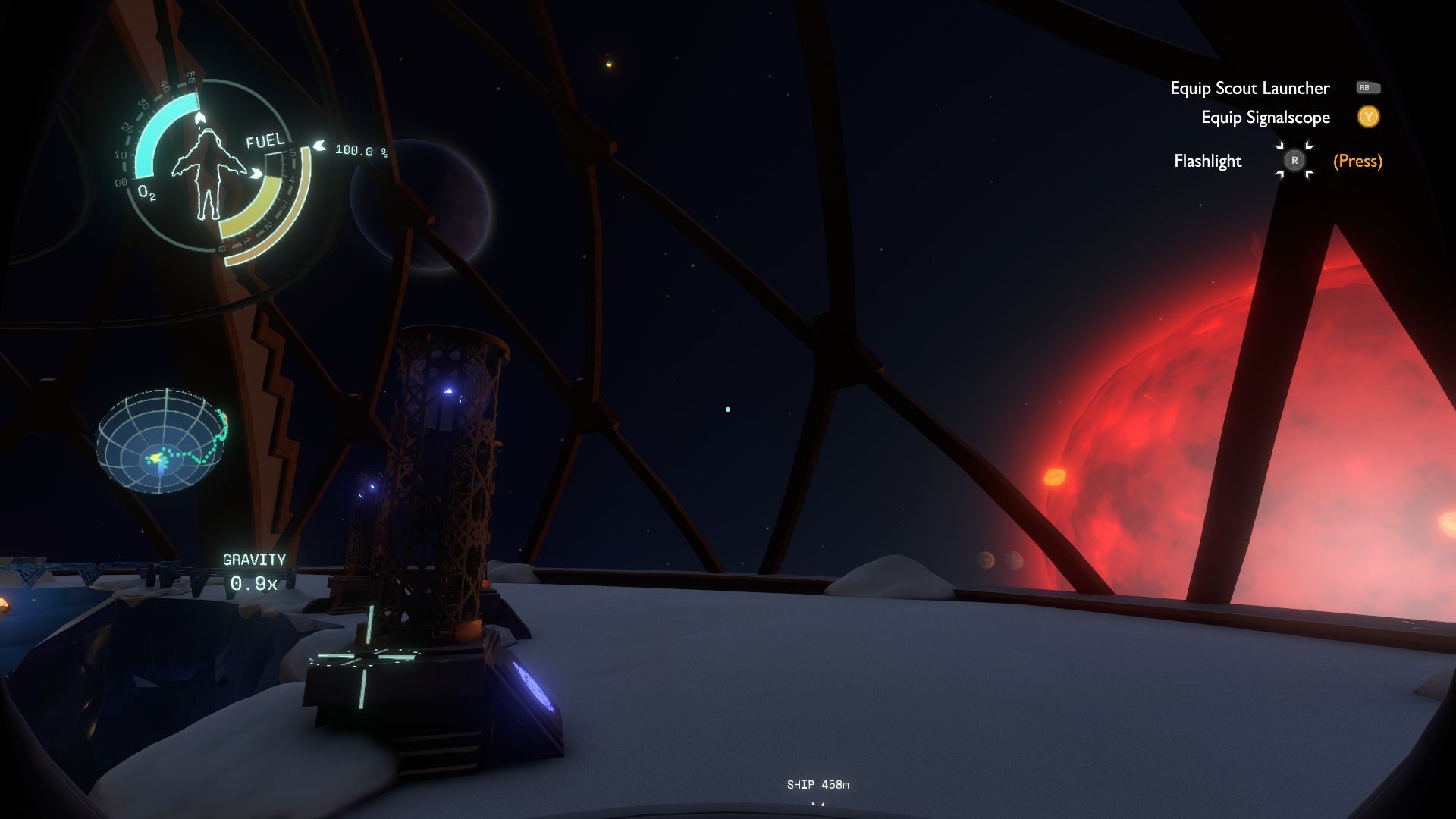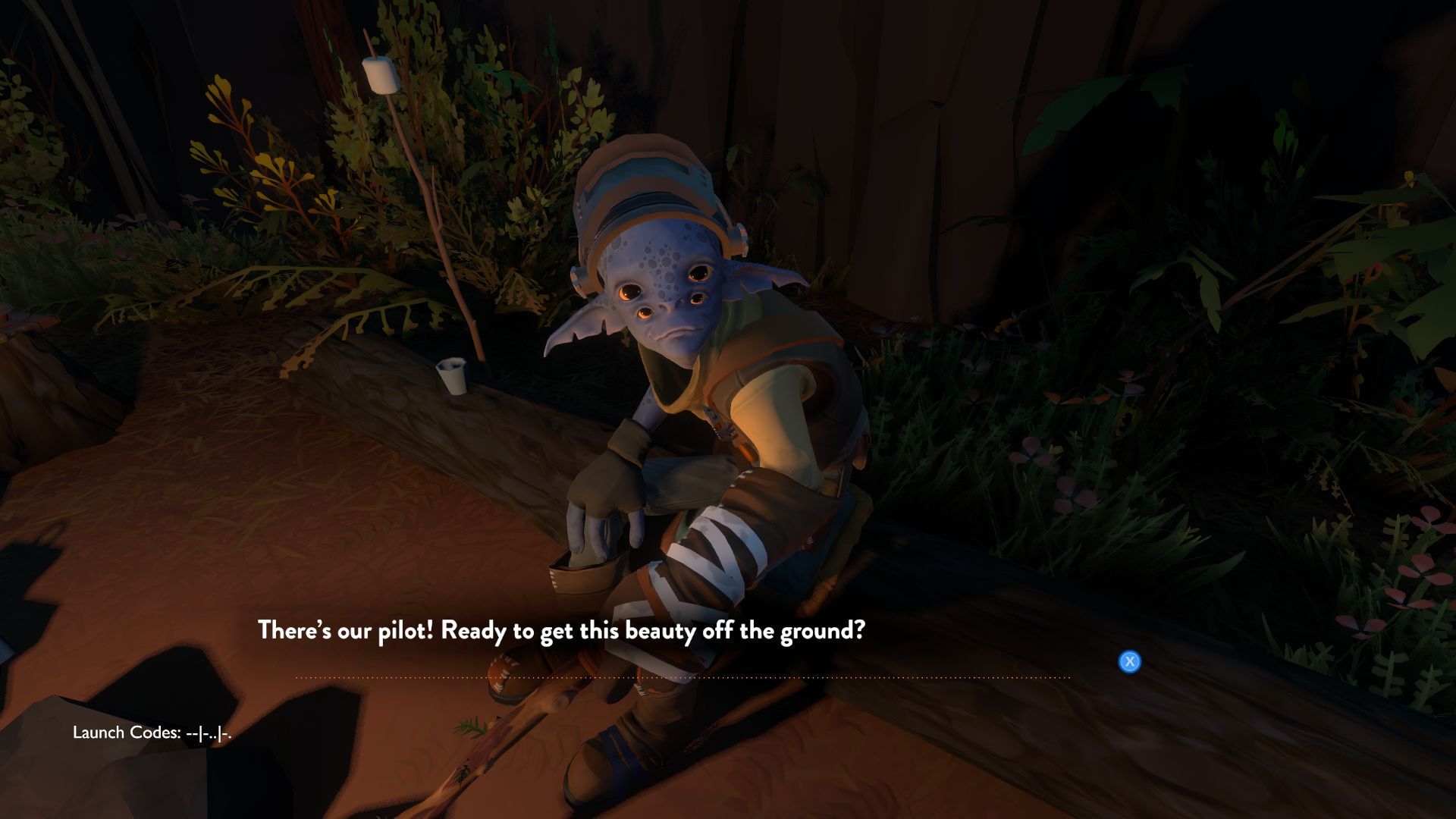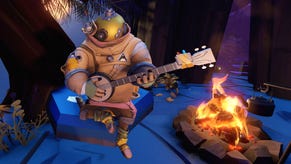Wot I Think: Outer Wilds
Astronomical
For a story about everyone dying, Outer Wilds is full of enthusiasm and hope. You’re a space pilot sitting by a campfire next to your spaceship, and you have 20 minutes to explore the solar system, before the sun explodes in a white-hot ball. But with that supernova you are reborn into a seemingly endless cycle. You are sent back in time to the campfire, for another 20 minutes of exploring, then another and another. It’s Groundhog Day in an astronaut’s suit. But it is also a learning game, generous of spirit, playful and encouraging. It taps into all those Carl Saganisms that make us look at the night sky and nod enthusiastically at the Big Dipper. Overflowing with a toyish love of astronomy and physics, it jettisons stuffy formulae for adventures on dangerous planets full of sand, and one-way trips to icy comets hurtling around the sun. We don’t do star ratings on RPS, but if we did I’d give Outer Wilds a small galaxy.
It’s also a game of finding delight in your discoveries. I’ll try to go light on detail but if you trust me enough to play something on the basis of a single paragraph (you fool), please grab it and enjoy your time in space. You can come back and listen to me some other time. Bring marshmallows. I’ll keep the fire warm.
This is a first-person explore ‘em up, but you start in a home village reminiscent of any good RPG. You’re the young hero, leaving home for your first adventure, talking to your neighbours and getting survival tips from your elders. It’s also an introduction to the principles of space exploration, letting you play with various toys. A model ship teaches you how to fly. A game of hide and seek with a noise detector teaches you how to hear signals in the cosmos. There’s a space suit, camera probes, and a curious fish in a tank that’s probably nothing to worry about.
The observatory at the top of the village is full of exhibits and has all the joy of visiting the Science Museum as a kid and playing with weird models. There’s a crystal that alters gravity and sticks you to the wall. Three balls in a small compound roll from one side to another, showing in real-time the effect of the moon’s gravity.
Eventually, you get your launch codes and take off. But the playfulness of your home town continues even as you explore other planets, with experiments and secrets hidden in ruins and caves all over the solar system. There is a planet made of water and cyclones. There’s a world that pours its sand onto the surface of its planetary twin (doubling up as a kind of hourglass for the end of all life). Sooner or later you realise the observatory on your home planet isn’t the Science Museum. The whole game is a trip to the Science Museum. And it’s joyful.
Flying to these enticing orbs involves twiddling your ship’s thrusters and blasting towards whatever you want, then furiously trying to slow down and right yourself as you rocket towards the surface. You may crash or damage your ship. But you can repair it from the outside just by holding down a button. And there are controls to simplify the spaceflight, including a single button to autopilot to your destination. Also, when you’re hooning towards a heavenly sphere, one useful button matches the velocity of your target planet. This is not the spaceflight of Elite Dangerous. It’s unashamedly anti-sim. Straightforward and speedy, it takes seconds to reach another planet. Which is good, because the sand on that hourglass world is running low. The sun is getting redder.
Your job is to piece together the mysteries of the universe through life-by-life exploration, and maybe find out why you’re trapped in a time loop. Well, nobody tells you that’s your job, but you’ll feel compelled by natural curiousity to do it. It’s helpful that your shipboard computer seems to remember all your previous trips, despite being otherwise unaffected by the time loop. Over multiple lives it builds a web of question marks, rumours and reminders to steer you towards whatever mystery is tickling you this time. Mysteries like: “What happens to stuff that falls into this black hole?” and “What’s hiding in this space fog?” Actually, let’s go see...
Oh.
OH GOD REVERSE THRUSTERS ABORT ABORT ABOR--
We have died. You will die a lot in Outer Wilds.
Your ship will be struck by a ball of molten rock. You will be squashed, suffocated, irradiated. You will fall to the surface of an alien world with a fatal crunch. You will be fried, exploded, flattened, thrown unexpectedly into space by weather, or your own jetpacking hubris. An underwater geyser will shoot you into the air and you will crack your skull on the underside of a secret bridge. At one point I parked on an ancient alien platform, got out of my ship and toyed with a strange control nearby. I won’t say exactly what occurred, but my ship exploded. I was stranded.
But this is all part of the game’s happy-go-lucky sense of jeopardy. You will make a mistake that throws all your plans for this 20-minute life out the escape hatch, but in doing so you’ll often reveal a new path to explore in the next life. It’s a jubilant kind of peril. Every death is something learned. Every solar Armageddon a happy shaking of the interplanetary etch-a-sketch.
No demise is as spectacular as those caused by the sun-gone-wrong, that inevitable supernova. My reaction to the first couple of apocalyptic “time’s up” blasts was panic. I tried to scramble away and take shelter, mostly for the sake of playing a role, getting into the spaceboots of my alien hero. But soon these world-ending explosions became moments of quiet acceptance, until eventually I was spending the last few minutes of every lifecycle trying to find the most scenic point of whatever planet I was visiting. The end of everything can be surprisingly tranquil.
To make new discoveries, there are also sometimes puzzles to figure out. Most are environmental problems. How do I climb up this high wall when the sticky gravity-tiles have crumbled away? How do I get through this corridor of dangerous cacti? The solution often involves waiting as the “solar cycle” changes the environment or opens up previously impassable areas. I can get through this cactus corridor when it’s half-filled with sand, for example. As a result, puzzles are usually a simple matter of patience (there’s a whole solar system to play with in the meantime). I found them welcoming, although others might feel a sense of foot-tapping. Plus, as you tidy up all the loose ends on your star charts, some of the more obscure locations become harder to find.
There is another type of puzzle, which is neat at first but eventually tired itself out for me. These involve “quantum” objects that move from place to place when they’re not being observed. If you look away, they move. Basically Doctor Who’s weeping angels, but less menacing. Some of these quantum puzzles are made clear with nearby audio diaries and alien scribblings (more on these scribbles in a moment), but other puzzles are a bit vague. I was especially stumped on a quantum conundrum involving a giant vanishing shrine, in which it had to appear in a very specific place. And since everything is on a countdown, I got kicked off the puzzle halfway through by my pal Mr Explode-o-star.
This was a bit annoying. There is so much to see that sometimes the solar deathblast feels like an interruption. I often enjoyed the sense of urgency when the familiar world-ending music kicked in. And with all the shortcuts and secret paths on these planets, it’s rarely troublesome to retrace your steps. But it can be frustrating on rare occasion. For example, if you’re at an alien ruin at the end of a long path, and the world starts to end before you can stick your nosey bonce in all the dead bedrooms.
Finding these derelicts of an ancient race is a big part of the adventure, and it pleases me no end that we’ve had two excellent games about space archeology in a single year. Heaven’s Vault takes a very different in form, but it shares a sense of peaceful wonder with this sciencey counterpart. Both are games about going on expedition. Neither features a single headshot.
Here too, there is an alien language, but it’s scribbled on walls and easy to read with a translating device. These logs are full of alien chit-chat that has been comically smartened-up. “I hope you’re pulling my locomotive limb,” says one alien to another in a log. Another alien calls their partner “my better 50 percent”. They’re basically earth sayings enthusiastically transliterated into Vulcan. It’s rarely bawl-with-laughter funny, but it is endearing and raises plenty of smiles.
Your extinct friends are also lovable in their enthusiasm for science. The cave walls of one planet are adorned with directions. “Don’t go this way,” reads one sign. “There are only rocks at the end.” Then it adds that they are “very interesting rocks”, as if apologising for being dismissive to a pile of rubble. There’s something lovable about an alien race which always has something nice to say, even about featureless stone. This comes through in many of the scrolls and logs you find. They were a people fueled by curiousity, and a drive to understand, yet they were kind too.
That wistful love for science is bound to Outer Wilds on an atomic level. The last game to make me feel so buoyant about space travel and astronomy was Kerbal Space Program, and this exploreathon inspires the same wide-eyed adoration for starstuff. And it does so without asking the player to understand Delta-V calculations or to perform difficult re-entry manoeuvres.
Ultimately, it’s the planets that make this game what it is. Worlds full of mysteries and anomalies. To me they are proof that there is still no substitute for handcrafting your virtual realms. Outer Wilds has more character in its handful of planetoids than No Man’s Sky had in 70 squinjillion. I have loved my time trekking across the dust or ice of these distant dirtballs, seeing the curvature on the horizon and wondering “what’s over there?” This is a solar system in miniature, full of secrets and marvels. And if there is any reason you are holding out on this because it is an Epic exclusive, I want you to fire that sentiment into the sun. You would be a silly space explorer to miss something this bright and big-hearted.
